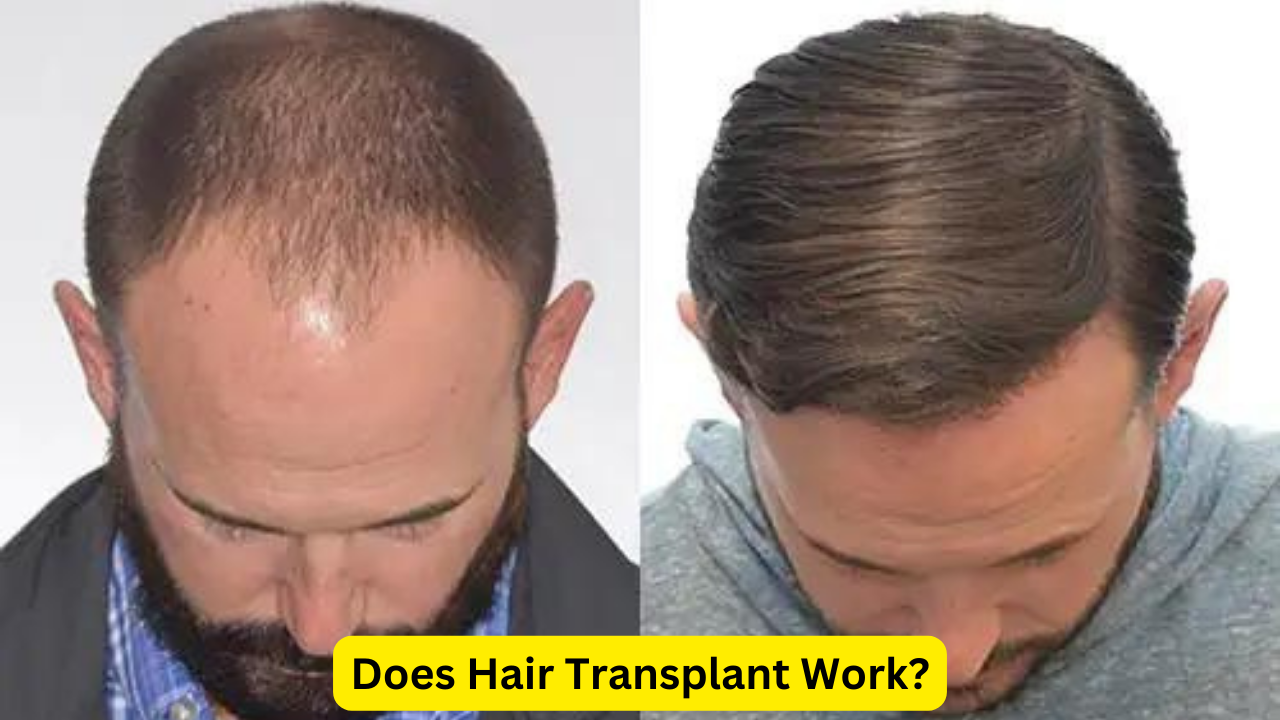Does Hair Transplant Work?

Introduction: Understanding Hair Transplants
Does Hair Transplant Work? Hair transplants have become a popular solution for individuals experiencing hair thinning or balding. This procedure involves transplanting healthy hair follicles from denser areas of the scalp to regions where hair is sparse or nonexistent. The question many people ask is, “Does hair transplant work?” In this comprehensive guide, we will explore the effectiveness, process, and considerations involved in hair transplants.
What is a Hair Transplant?
A hair transplant is a surgical procedure designed to address hair loss by moving hair from one part of the body to another. Typically, hair is taken from the back or sides of the scalp, where hair growth is more abundant, and transplanted to the thinning or balding areas. This method helps in restoring hair density and achieving a more natural look.
Types of Hair Transplants
1. Follicular Unit Transplantation (FUT)
Follicular Unit Transplantation, or FUT, involves removing a strip of scalp from the donor area. The strip is then divided into individual follicular units, which are transplanted into the thinning or balding sections of the scalp. This method is known for its ability to transplant a large number of grafts in a single session.
2. Follicular Unit Extraction (FUE)
Follicular Unit Extraction, or FUE, involves extracting individual hair follicles directly from the donor area using a specialized tool. These follicles are then implanted into the recipient area. FUE is less invasive than FUT and leaves minimal scarring, making it a preferred choice for many patients.
Effectiveness of Hair Transplants
Hair transplants are generally considered effective for restoring hair in areas affected by thinning or balding. The success of the procedure depends on various factors, including the skill of the surgeon, the quality of the donor hair, and the patient’s overall health. On average, patients can expect about 60-80% of transplanted hair to grow back within six to nine months.
Factors Influencing Hair Transplant Success
1. Surgeon’s Expertise
The skill and experience of the surgeon play a crucial role in the success of a hair transplant. A qualified and experienced surgeon can ensure proper extraction and implantation of hair follicles, leading to better results.
2. Quality of Donor Hair
The quality and quantity of donor hair significantly impact the outcome of the transplant. Healthier and denser donor hair provides better coverage and a more natural appearance.
3. Patient’s Health
A patient’s overall health and lifestyle choices can affect the healing process and hair growth after the transplant. Maintaining a healthy diet, avoiding smoking, and following post-operative care instructions are essential for optimal results.
Costs of Hair Transplants
The cost of a hair transplant can vary widely based on several factors, including the number of grafts needed, the technique used, and the location of the clinic. On average, the cost ranges from $4,000 to $15,000. While this may seem expensive, many patients find the investment worthwhile due to the long-term benefits and improved confidence.
Recovery and Aftercare
1. Immediate Post-Operative Care
After the procedure, patients may experience mild pain, swelling, and redness in the treated area. It is essential to follow the surgeon’s post-operative care instructions, which may include using prescribed medications, avoiding strenuous activities, and keeping the scalp clean.
2. Long-Term Care
Long-term care involves regular check-ups with the surgeon to monitor the progress of hair growth and address any concerns. Patients should also continue to follow a healthy lifestyle and avoid habits that could negatively impact hair health.
Potential Risks and Side Effects
Like any surgical procedure, hair transplants come with potential risks and side effects. These may include infection, scarring, and temporary hair shedding (shock loss). However, these risks are minimal when the procedure is performed by a skilled surgeon and when post-operative care instructions are followed diligently.
Alternatives to Hair Transplants
For those who may not be ideal candidates for hair transplants or prefer non-surgical options, several alternatives can help address hair loss:
1. Topical Treatments
Topical treatments, such as minoxidil (Rogaine), can stimulate hair growth and slow down hair loss. These treatments are available over-the-counter and are applied directly to the scalp.
2. Medications
Oral medications, like finasteride (Propecia), can also be effective in treating hair loss by preventing the hormone responsible for shrinking hair follicles.
3. Laser Therapy
Low-level laser therapy (LLLT) is a non-invasive treatment that uses light energy to stimulate hair follicles and promote hair growth.
4. Hairpieces and Wigs
For immediate results without undergoing a surgical procedure, hairpieces and wigs offer a practical solution. Advances in technology have made these options more natural-looking and comfortable.
Conclusion
In conclusion, hair transplants can be a highly effective solution for individuals experiencing hair loss. The procedure, when performed by a skilled surgeon, can lead to significant improvements in hair density and appearance. However, it is essential to consider the costs, potential risks, and the quality of the donor hair before deciding to undergo a hair transplant. For those seeking non-surgical alternatives, options like topical treatments, medications, and laser therapy are also available.




